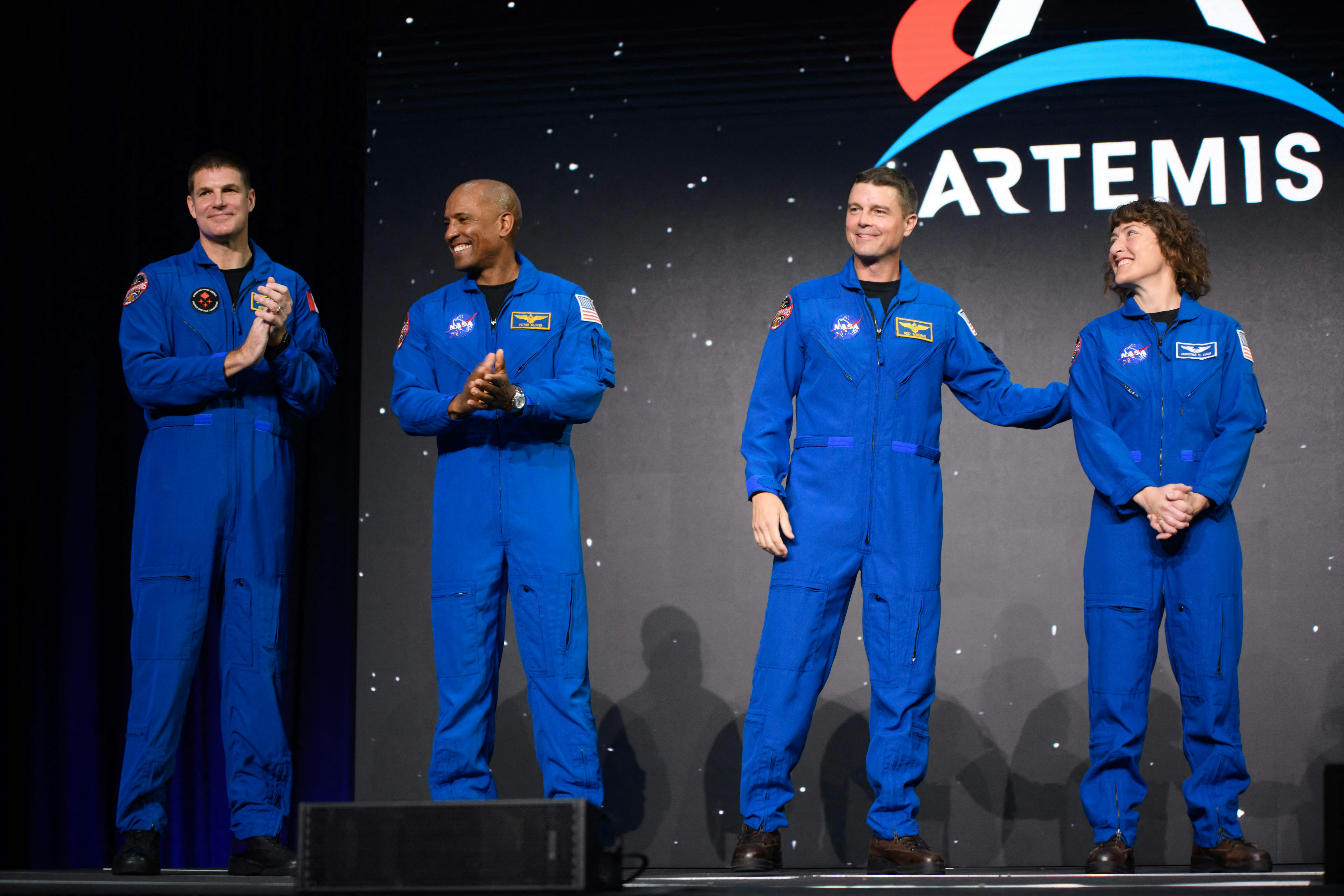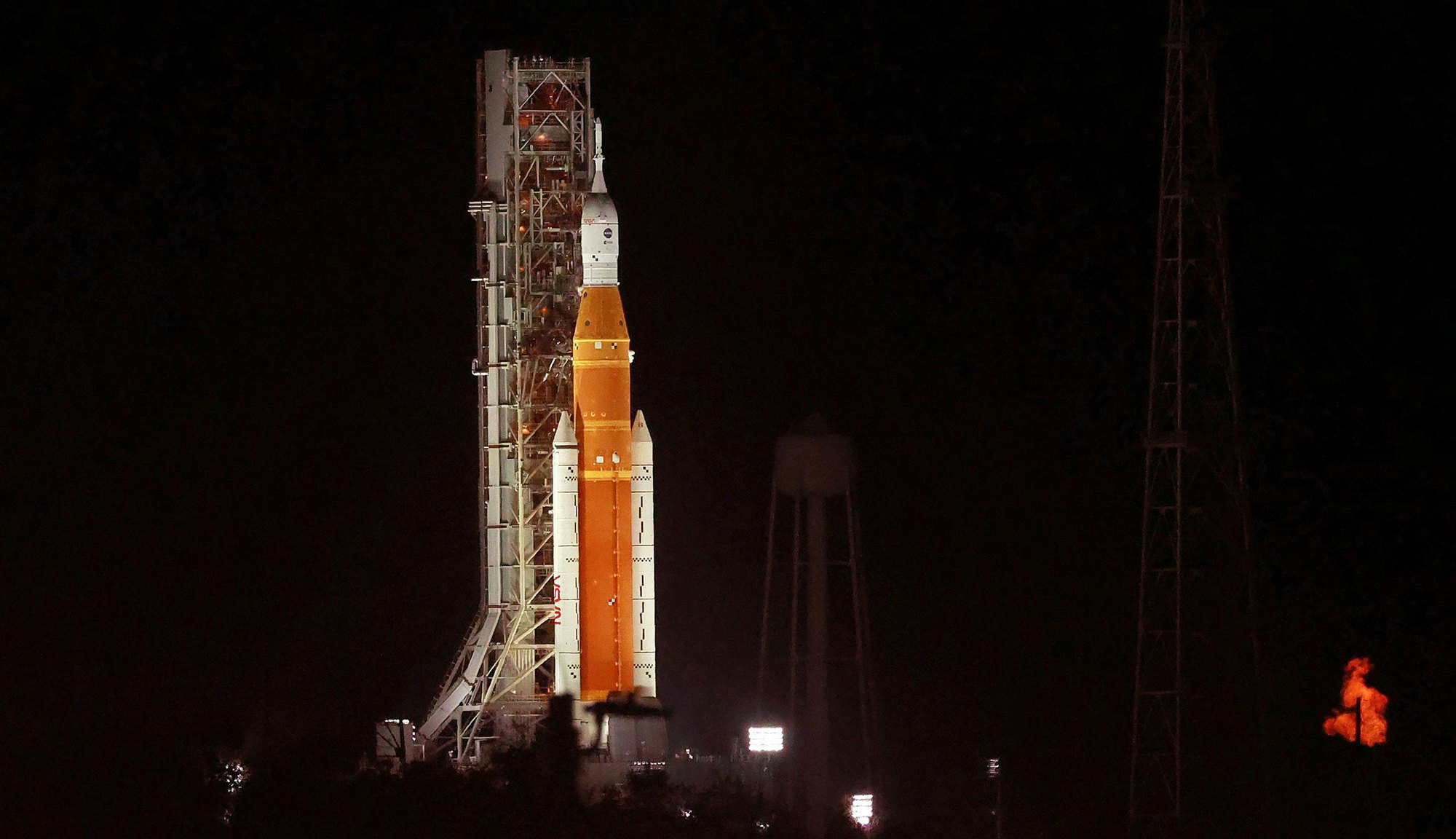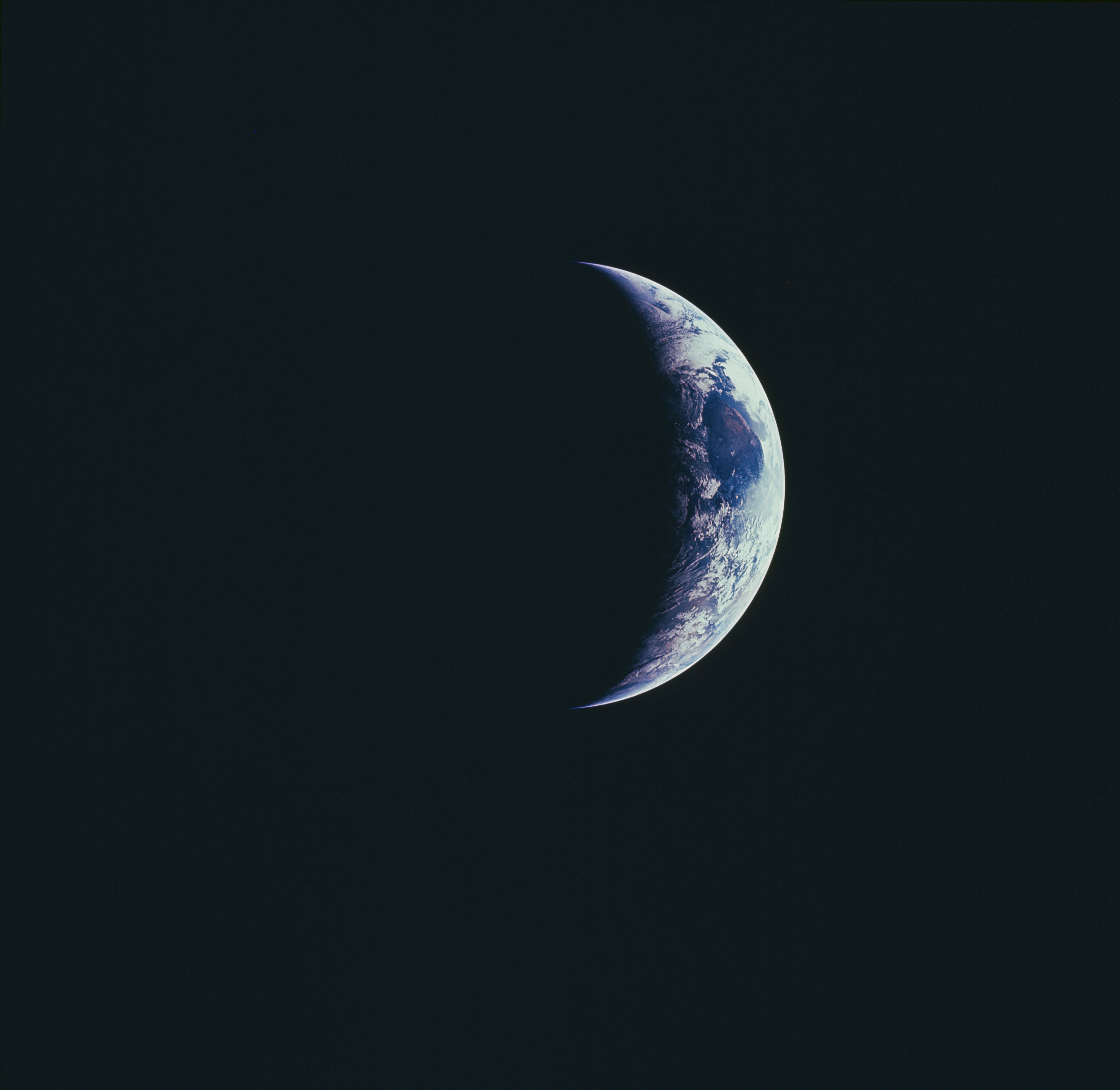
An hour-and-a-half into the Apollo 11 flight, which landed the first humans on the moon, astronaut Michael Collins hustled to find the Hasselblad camera that had floated away from him. Once in his grasp, Collins worked to snap pictures, though he’d missed capturing sunrise from Earth orbit. As the astronaut peered down below at a landscape on Earth, he searched for the right words to describe what he saw.
“Trees and a forest down there. It looks like trees and a forest or something. Looks like snow and trees. Fantastic. I have no conception of where we're pointed or which way we are or a crapping thing, but it's a beautiful low-pressure cell out here,” he said, according to a NASA transcript of the historic mission.
More than half a century later, NASA is gearing up to send humans to the lunar environment again. It goes without saying that modern astronauts owe a lot of where they are today to Collins and the Apollo generation.

But today’s astronauts have a different skill: Their eyes are trained to study planetary surfaces thanks to the more than 50 years of missions since the Apollo era. According to Noah Petro, project scientist with NASA’s Lunar Reconnaissance Orbiter spacecraft and recently-appointed project scientist for Artemis III (the landing mission), this is a major advantage for the upcoming Moon trip.
“Nothing I’m saying should be viewed as being any kind of diss on Apollo astronauts,” Petro tell Inverse. “Their observations were spectacular. They were also trying to make sure the spacecraft was working. They were asked to do a lot of things.”
He adds that “the Artemis crew will have this additional advantage of, for many of them, months of Earth orbit, looking down,” referring to the time the astronauts have spent aboard the International Space Station (ISS).
“We have sent cameras to the Moon, but we’ve never been able to recreate the kind of observations that Apollo astronauts made from orbit,” he says.
Earlier this month, NASA and the Canadian Space Agency announced that Victor Glover, Reid Weisman, Jeremy Hansen, and Christina Hammock Koch would be the first crew of the new Moonshot program dubbed Artemis. They’ll fly as early as next year, going around the Moon and back for the Artemis II mission. Their names went public just a few months after Artemis I, an uncrewed integrated demonstration of the Orion space capsule and the Space Launch System rocket, ended successfully.
Unlike Apollo, Artemis astronauts will have had years of collective experience watching landscapes from a birds-eye view. Three Artemis II crew members have spent at least five months orbiting about 250 miles above the planet. One of them, Koch, is the record holder for longest single spaceflight by a woman, clocking in at 328 days in Earth orbit.
On the International Space Station (ISS), today’s astronauts frequently gaze out through its downward-pointed, multi-windowed cupola. NASA astronaut Suni Williams once described the cupola as a “glass-bottom boat” where she and others have found themselves “hanging out in all the time.”
NASA built the ISS with its Shuttle Program, the agency’s next major chapter of spaceflight after Apollo. Though NASA will likely retire this orbital laboratory, now in its third decade, by the year 2030 to make funding room for its ambitious attempts at building a permanent presence on the Moon with its Artemis program — which includes aspirations for Mars crewed journeys, too — the space station will live on as a critical tool that shaped modern astronauts.
The ISS gives astronauts “an incredible platform” to learn how to watch the Moon’s surface for important information, Petro says.

“As much as we think it might be silly — like, why do you need to practice looking at the planet? — you know, it’s a different skill: Looking down from hundreds of miles above the planet, and identifying features, and describing the geology, even for a place that we’ve been or know about, with the Earth,” Petro says.
Petro says Artemis astronauts will use these skills to elevate the work of Apollo. “We have sent cameras to the Moon, but we’ve never been able to recreate the kind of observations that Apollo astronauts made from orbit,” he says.
Partly, this comes from the ability of human eyes to be dynamic and make quick decisions, whereas spacecraft only have the most rudimentary autonomy. It’s still up to mission operators on robotic missions to decide from afar what to observe — sometimes a bit too late for a quick second glance, and the next go-round may not line up just right to gaze at an unusual feature.
“The human eye is pretty spectacular. The things that we’re going to be having crew members look for are patterns and textures,” Petro says. “You can take images, black and white images, color images. But the human eye can immediately recognize, hey, that’s something unusual, let me pay attention to that.”
“You can take images, black and white images, color images. But the human eye can immediately recognize, hey, that’s something unusual, let me pay attention to that.”
Apollo astronauts spent a fraction of time in space when compared to today’s astronauts. But even so, their flight journals show they could identify lighting flashes, continents, and the peculiarities of clouds over Earth.
“See those big thunderheads on the horizon?” asked Apollo 17 astronaut Gene Cernan just 20 minutes into the mission that would be the last time humans flew to the Moon. “The clouds are sticking up above the horizon,” Apollo 17 astronaut Ronald Evans noted soon after.
Artemis astronauts are poised to pick up this mantle, bring their ISS experiences to the Moon and deliver science observations not seen in a very long time, thanks to the nuanced capacity of perception from the human eye.







